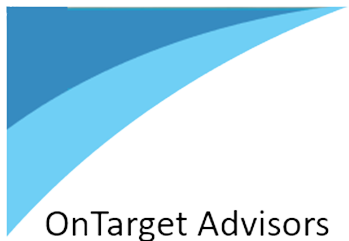Using Moore’s Positioning Framework
In my prior blog, I challenged healthcare marketers to really think about who their buyer really is by going beyond the CIO as the default. I asserted the position that even though buying is a team sport, zeroing in on one key persona allows marketers to create messaging that will attract and connect with specific individuals most likely to willingly enter your sales funnel. This focus helps the buyer too, because they have a real business need to solve and are actively looking for solutions.
Knowing your buyer gets even more helpful for marketing and sales professionals when you put their needs and wants into a framework that drives conversations. Such a framework was introduced by Geoffrey Moore in his influential book, “Crossing the Chasm”. His positioning framework serves as a strategic guide for tech companies aiming to enhance their market penetration in the healthcare sector. Among the various elements of this framework, this blog focusses on the pivotal concept of the compelling reason to buy, deceptively hidden within the framework element known as “That”.
The Positioning Framework: An Overview
Moore’s framework is predicated on his ideas around the technology adoption life cycle, a model that delineates the typical progression of customer acceptance towards novel technology. The term “chasm” is indicative of a significant divide between the early adopters of a product (those willing to embrace new technology) and the early majority (those who prefer to see established applications before making a purchase). The Chasm represents a problem for tech companies with innovative solutions, because they need to find a way to attract more early majority buyers. Healthcare leaders are notoriously early majority type buyers, eager to hear and see what their peers are up to before diving into a novel technology.
Moore's positioning framework offers us one solution to that problem with a pragmatic approach to explicitly guide you through customer segmentation. By thoughtfully considering each field in the 6-step framework or formula, you can build a powerful positioning statement for your product. Below is as summary of that framework in Figure 1.
Figure 1. Summary table of Moore’s positioning framework from the book Crossing the Chasm.
Defining the Compelling Reason to Buy (That)
The positioning framework is somewhat self-explanatory, however in my experience there are common areas where people get stuck. As I stated before, it is most important to begin by knowing who your product is “For” and I covered that in my last blog. The next stickiest area is the “That”, with is the compelling reason to buy. This refers to a distinct, irrefutable advantage that renders the product indispensable to customers. It is not merely about a list of exceptional product features. It is about articulating the product’s value in a manner that resonates with customers and inspires them to make a purchase.
Implications for Selling to Healthcare Providers
In my experience in healthcare, generic “That” statements typically pertains to enhancing patient outcomes, augmenting efficiency, or minimizing costs:
Enhance Patient Care: This could be achieved through more precise diagnoses, more efficacious treatments, or superior patient engagement.
Augment Efficiency: Technology can streamline processes, reduce administrative tasks, and liberate staff time, thereby enabling healthcare providers to serve a larger patient population more effectively.
Minimize Costs: By augmenting efficiency and patient care, technology can ultimately lead to cost savings, a compelling reason for budget-conscious healthcare providers.
It depends on your specific marketing segment how you achieve those above goals and in what way would make them compelling. The list above are generic, and I believe are not really compelling on their own. Yes, they are on target for solving big issues in healthcare, however, what would make these a statement compelling is how you specifically enhance care, or augment efficiency, or minimize cost. So start with these as inspiration but dig a level deeper to show your understanding of the segment you are targeting.
Example Positioning Framework
Let’s assume we are marketing the HAL9000, a new AI-powered ERP solution for ambulatory surgery centers (ASC). Here I’ve filled out the table with completely made up information to only give you some idea of what the table can look like when complete.
Figure 2. A sample completed positioning framework with made up information for a fake product called the HAL9000.
Conclusion
A word of caution: positioning frameworks are not shared with customers or published to the public. These are used internally to help shape marketing programs, to aid in sales training, and even develop your elevator pitch to start a conversation. In essence, Geoffrey Moore’s positioning framework provides a structured approach to understanding the market, differentiating the product, and communicating its value effectively.
The ability to understand and effectively communicate the “Compelling Reason to Buy” is crucial for technology companies aspiring to penetrate the healthcare market. By emphasizing the tangible benefits their product offers to healthcare providers, these companies can bridge the chasm and achieve widespread adoption of their technology.
Contact me if you would like to discuss this further for your specific market segment, I would to see what your positioning framework looks like and compare that with the current market conditions.



